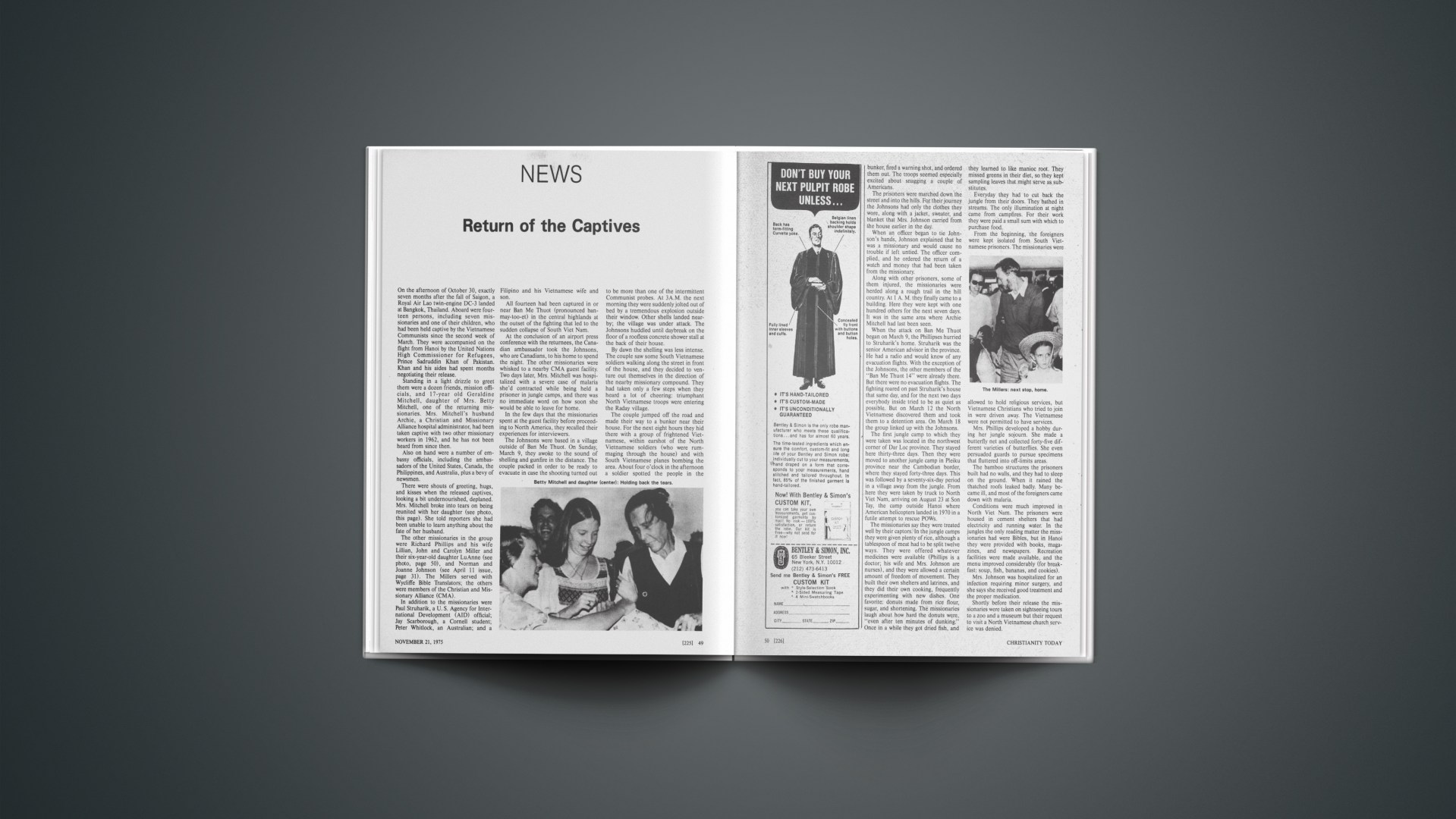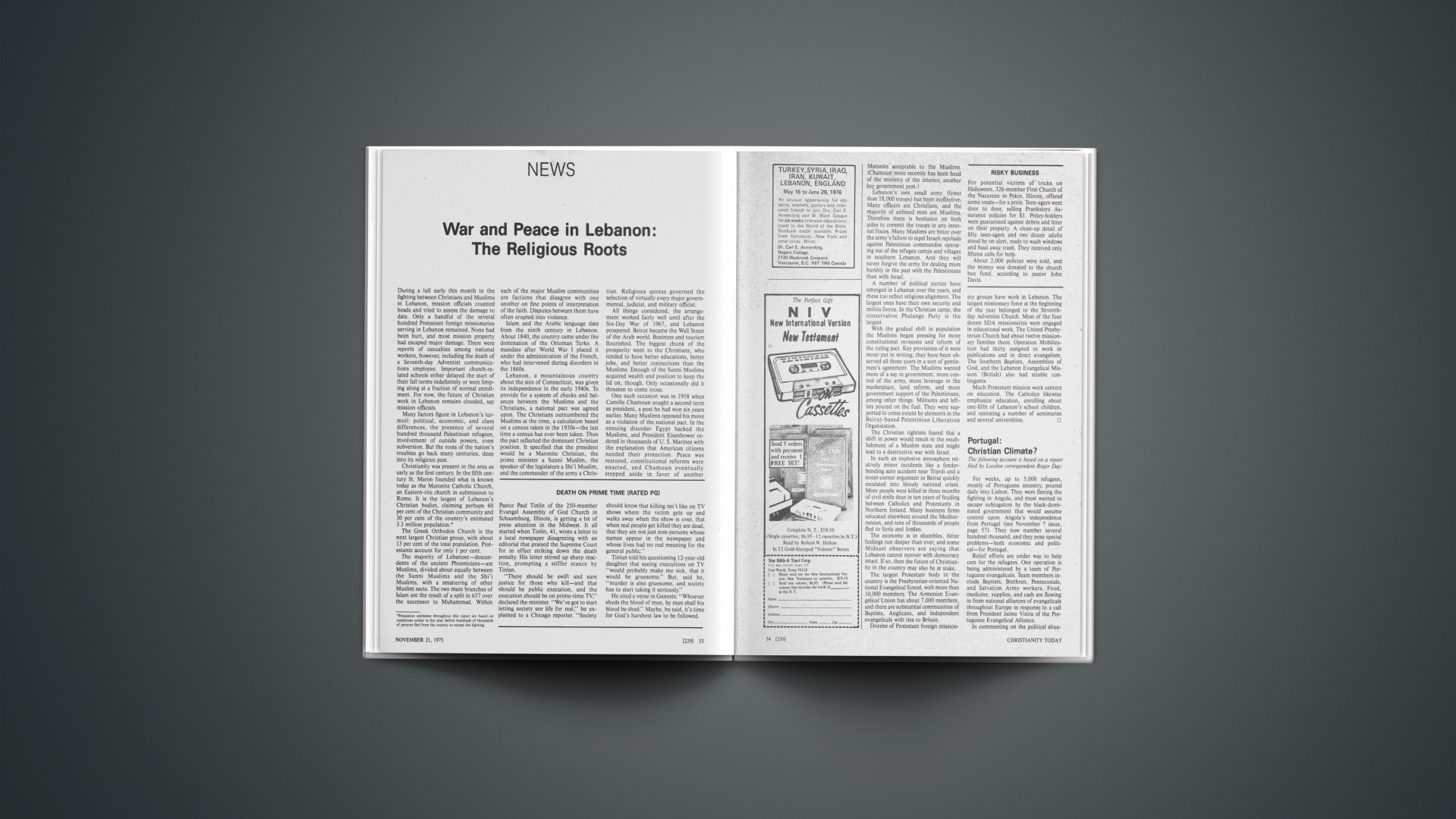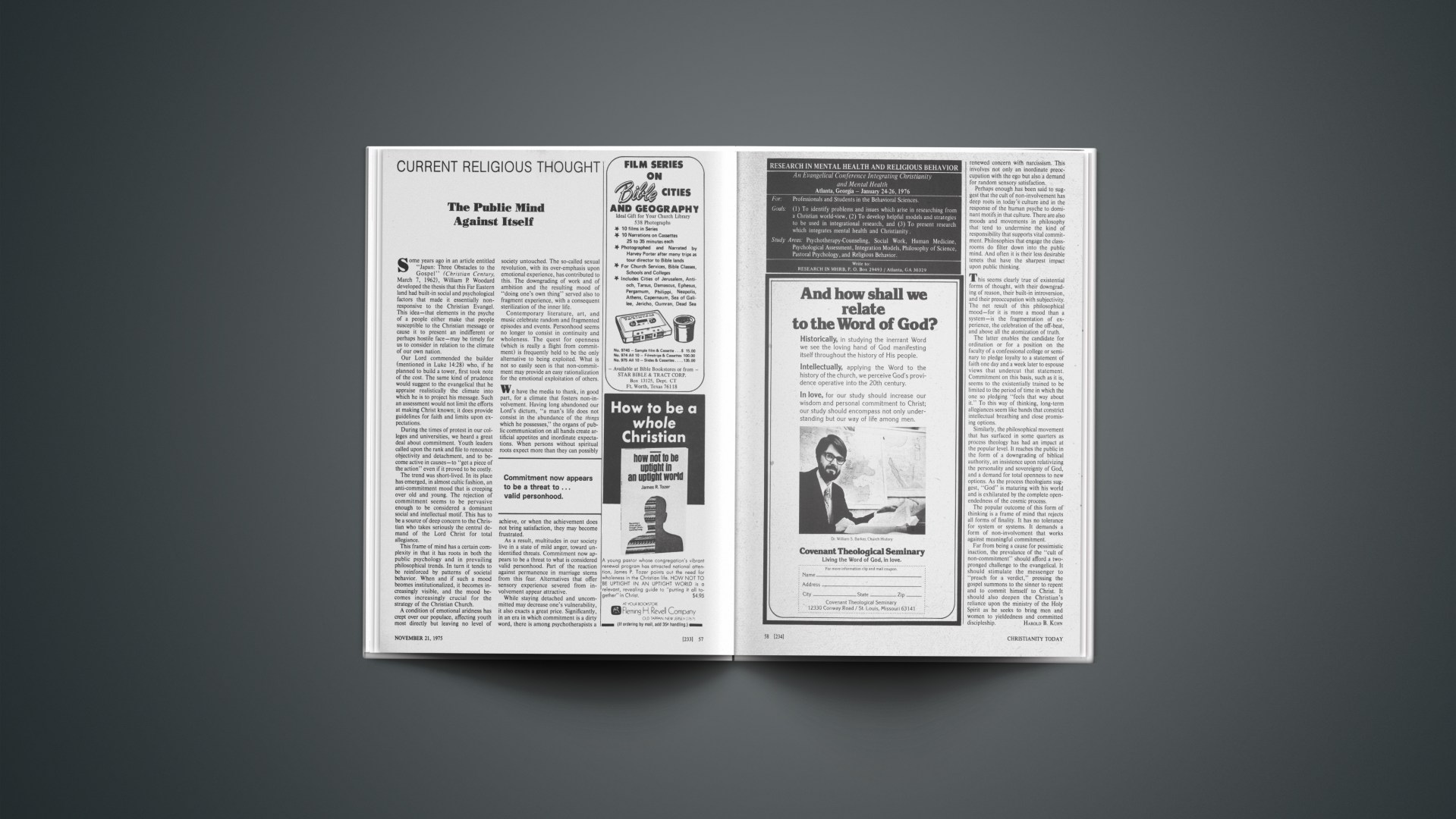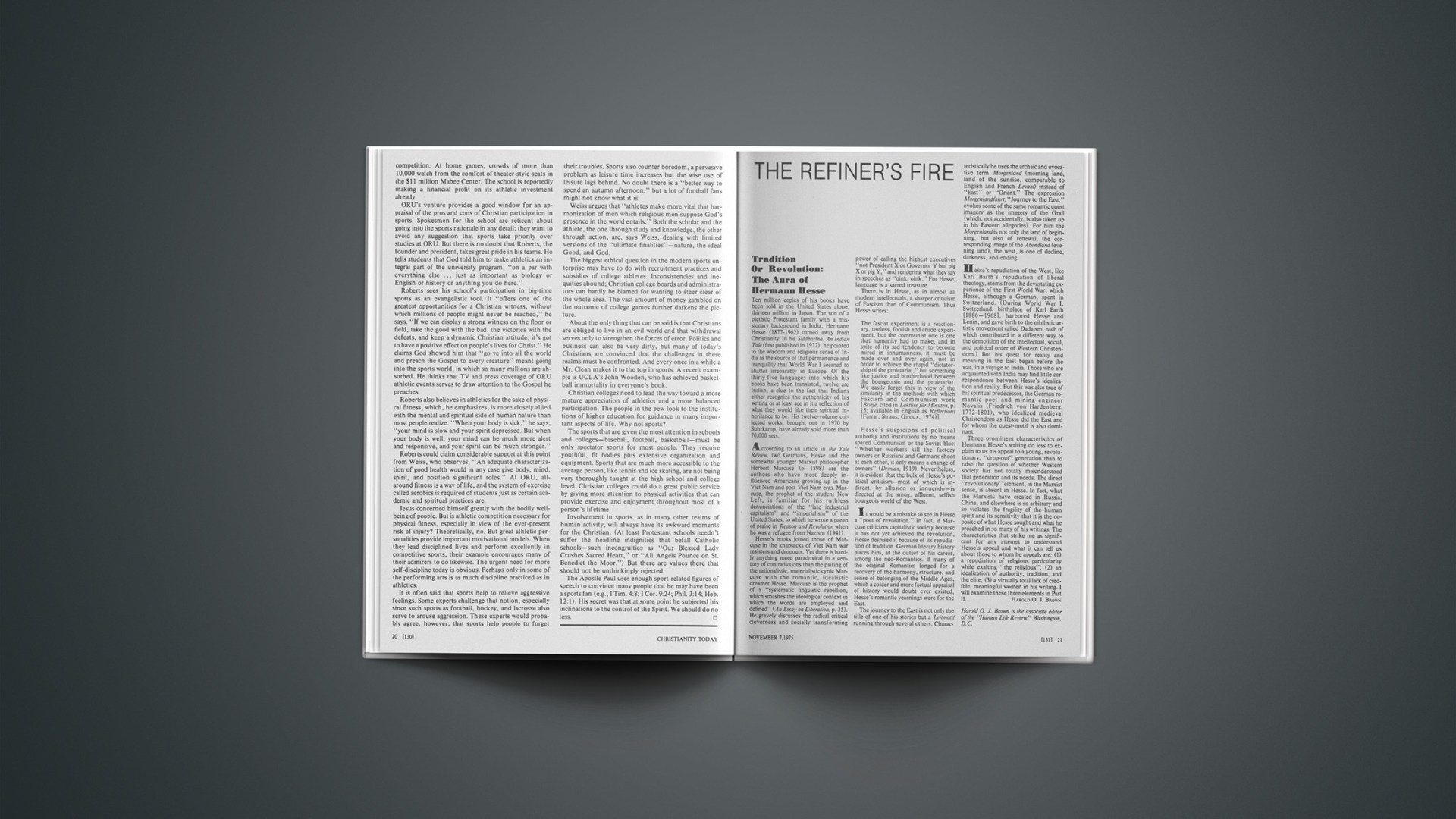Do you feel disorganized and behind schedule most of the time?
Do you find it hard to prepare a budget and stay with it?
Do you often do things on the spur of the moment?
Does your interest often shift from one thing to another when you have a number of things to do?
If you answered yes to these questions, you may be having difficulty disciplining yourself. Low self-discipline and its impulsive counterpart is a special problem for ministers because they usually have no one to check the progress of their work each day. Moreover, goals, both for themselves and for the church, are not always clear. It is easy for the minister to fall into a pattern of activity that gives the appearance of busyness but meets no goals.
The Taylor-Johnson Temperament Analysis (T-JTA) reveals that people with low self-discipline often suffer also from nervousness, depression, subjectivity, and criticalness. They can improve their self-discipline by attacking these four problems. The American Institute of Family Relations (5287 Sunset Blvd., Los Angeles, Calif. 90027) publishes some excellent guides for dealing with traits that are out of line on the T-JTA. The guides are inexpensive mimeographed materials of one or two pages that tell how the traits can be changed to produce more constructive behavior. Four of them dealing with the traits mentioned above are “Suggestions for Decreasing Nervousness,” publication #511; “Suggestions for Decreasing Depression,” #513; “Be More Objective,” #514; and “Help for Reducing Hostility,” #512.
For an attack on the problem of low self-discipline, publication #520 will be of help. The following suggestions are adapted from it.
1. Avoid fatigue. Check your sleeping habits to discover what patterns make you feel at your best. Some people find that a nap during the day improves their ability to function well during the evening hours. When you can do so, sleep as long as you want to get an idea of how many hours of sleep you need. Proper rest tunes up the body and makes self-discipline easier.
2. Chart your work moods. Do you work best in the early morning? Late at night? Reserve the most demanding tasks for your prime time. Some days of the week and some times of the year may be better than others for you. Avoid taking on big projects in your off season. Be aware also of “emotional anniversaries.” The emotion of past traumatic events is often reexperienced when that time of the year comes around. Avoid major projects at that time.
3. Give attention to your health. Your doctor may find a physical cause for the malaise of hyperactivity that often accompanies low self-discipline. An over-active thyroid may produce nervousness, irritability, and insomnia. And underactive thyroid may cause sluggishness. Encocrine secretions of the sex glands affect emotional interests. The pituitary, parathyroids, and adrenals affect temperament as does blood chemistry—acid-base balance, calcium-potassium ratio, and sugar tolerance.
4. Slow down and think things through. Write out the pros and cons of issues that require a decision. If you tend to make snap decisions, make it a policy to wait at least twenty-four hours before making your decision, if at all possible. Sleep on it.
5. If you tend to shirk responsibility, try to take on more. Gradually assume responsibility for small things and work your way up to larger ones.
6. Sometimes decisions do have to be made quickly. When others are “losing their heads,” relax and breathe deeply. Keep the decision-making process as deliberate as possible. Although it is valuable to understand the feelings of those involved in emotional situations, don’t merely emote or permit others to do so. Get at the facts.
7. Plan your day’s work in advance. Write down all you need to do and number each item to show its priority. Estimate how much time it will take you to do the high-priority items, and put the low-priority items off until the next day if you don’t have time to do everything on your list. It is wiser to do a little well than a lot poorly.
8. Establish goals, both long-range and short-range. Your long-range goals have to do with your ultimate objective. Your short-range goals have to do with the steps in accomplishing the ultimate objective.
9. Do one thing at a time. Much valuable energy is wasted in jumping from one thing to another.
10. Look at failure as a learning experience. Those who try and fail are much wiser than those who never try for fear of failure. Failure does not necessarily mean that a goal is out of reach. It may indicate the need for a different approach. If your goals are reasonable, persistence can turn defeat into success.
11. Don’t expect perfection. There will never be such a thing in your own performance or in that of others.
12. Watch the mood of the occasion and adjust yourself accordingly. If you are working with other people, try to move with the feeling of the group if at all possible. Bucking the group mood can thwart the accomplishment of the group objective. If you find yourself repeatedly out of step with the group, you may need to seek a different channel for the fulfillment of your goals.
13. Seek efficiency. Don’t drive tacks with a sledge hammer or railroad spikes with a tack hammer. Stop to find the easiest, simplest, and least fatiguing way of doing a job, and then pride yourself in doing it well, not necessarily quickly.
14. Proportion your activities for the day. Find the balance of work, rest, exercise, and play that makes you function at your greatest efficiency.
15. Avoid situations that appeal to your impulsiveness. You should learn by past impulsive behavior what situations are likely to call forth impulsiveness rather than self-discipline. Flee youthful lusts!
16. As a general thing, persons with low self-discipline will find it to their advantage to comply with the demands of custom. If they try to be unconventional, their impulsiveness is likely to get them into difficulties that they had not foreseen. Let someone else do the pioneering.—The Reverend ANDRE BUSTANOBY, marriage and family counselor, Bowie, Maryland.












